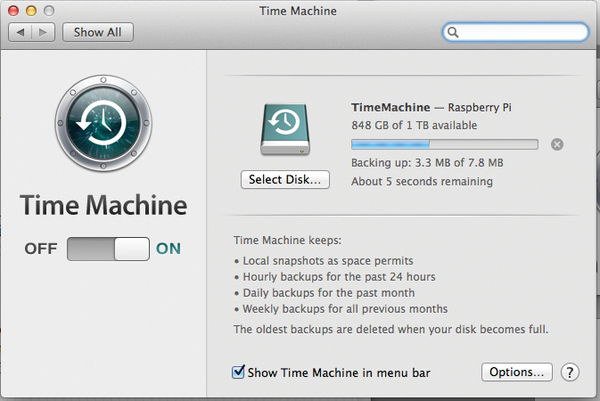
But once I learned that adding AppleTalk support overall would require recompiling a kernel for the drive, I kind of put the idea aside, figuring I'd bring it to KFest and hack on it with someone there who knows what they're doing.
Rpi configure netatalk download#
I wasn't terribly Linux-savvy at the time, but I eventually figured out that to get network boot support, I would need to download Netatalk and compile it myself, from source. What I discovered, after some time, was that a) the version of Linux that shipped on that NAS did not include support for AppleTalk networking, and b) the easily-installed Netatalk package didn't include the components required for network boot, which I absolutely wanted. But this was clumsy, so I invested in an AsanteTalk, which is a dedicated (if finicky) LocalTalk-to-Ethernet bridge.
Rpi configure netatalk how to#
There was the issue of how to actually interface my Apple II to the network this turned out to be relatively easy, by using an Apple-provide control panel for classic Macs called LocalTalk Bridge, which indeed bridged AppleTalk from its LocalTalk port (connected to an Apple II) to its Ethernet port (connected to my network, which was connected to the NAS). So I looked into it, and it appeared that Netatalk running on Linux still supported the older AppleTalk networking protocol required by an Apple II, and it even supported network boot into ProDOS. I immediately wondered if it would be possible to somehow get my IIe to talk to it. This was possible by installing Netatalk, an open-source implentation of AFP (AppleShare). It was basically a small Linux computer in a drive enclosure, and it was widely hacked to make it do all kinds of tricks, one of which was providing native file sharing for Macs.


It so happens that I had purchased a Western Digital My Book World Edition, which was one of the first popular NAS products available. I'd need some sort of CF extender to get the card outside the machine, then run CiderPress in a Windows emulator.) (It's true that there were Compact Flash storage cards at the time, and I actually bought CFFA #16, but these didn't appeal to me quite as much because of their relative lack of accessibility on other platforms. How great would it be if you could just have an always-on network drive for an Apple II, with all the storage you might ever need, and accessible from other computers on the LAN?
Rpi configure netatalk mac#
Then, I got an idea into my head: this is great and everything, but you still need an old Mac around. Using AppleShare 3.0 on another Mac as a host, I made this happen, and there was much rejoicing. And it appeared that you could even *boot* the Apple II into ProDOS from the network, which blew my mind.

This was intriguing I hadn't imagined it was possible.Īnd it was also potentially valuable as a way of providing mass storage for an Apple II, with the bonus that other computers could easily access it as a means of getting stuff to and from an otherwise isolated machine.Īfter some experimenting, I discovered that was exactly what it did, and I bought an actual Workstation Card for my IIe, because that would be much, much cooler. One of the things this card could do was emulate something called a Workstation Card, which appeared to let Apple II computers access files on a Mac file server. Way back in 2010, my primary Apple II was a Mac Color Classic with an Apple IIe compatibility card. A2SERVER for Apple II and Raspberry Pi A2SERVERĪ2SERVER has been a multi-year labor of love.


 0 kommentar(er)
0 kommentar(er)
